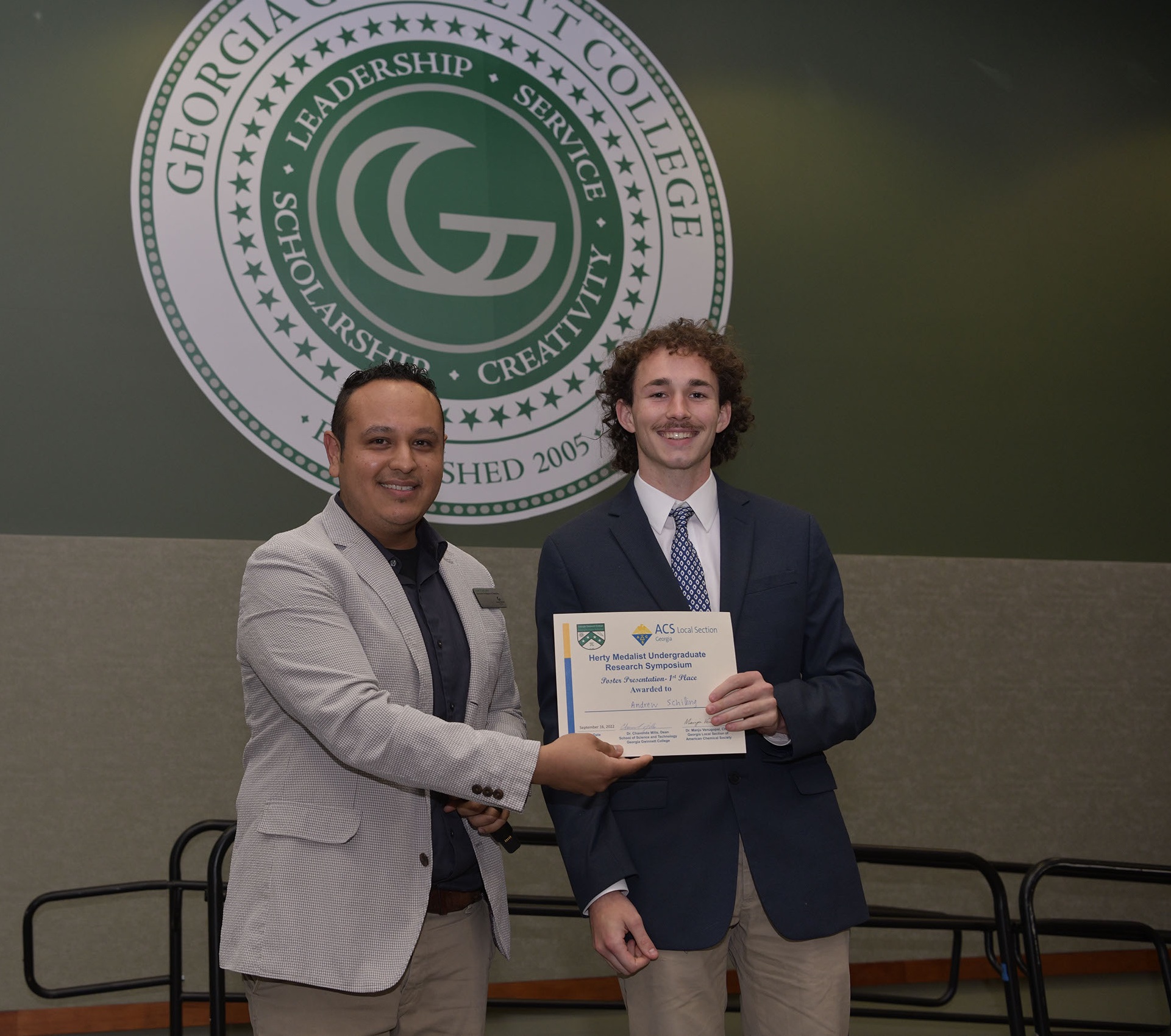
Oct 26, 2022 - Atlanta, GA
Biochemistry undergraduate Andrew Schilling has won the Best Presentation Award at the 2022 Herty Metal Undergrad Research Symposium (HMURS).
Schilling is an undergraduate research assistant in the lab of Regents' Professor Nicholas Hud, where he works to synthesize prebiotically plausible biomolecules and use supramolecular assemblies as templates in the generation of proto-nucleic acid oligomer from non-canonical nucleobases and alternative backbones — while also studying their base-pairing properties to understand the chemical evolution of nucleic acids and possible pathways of informational biopolymers.
Schilling's award includes a travel award to the American Chemical Society (ACS) national meeting, as well as an annual ACS membership.
His winning presentation, "Supramolecular Assembly Promotes the Non-enzymatic Generation of Proto-nucleic Acid Oligomers", is summarized below.
Abstract
The means by which biological informational polymers arose are currently unknown. The possibility that RNA was the first genetic polymer of life has motivated researchers to seek a prebiotic synthesis of RNA,1,2 yet demonstration of such a process remains difficult. Alternatively, RNA may be a molecular descendent of proto-RNA. Which in turn may be a descendant of an original polymer or contained nucleobases with an intrinsic capability to base pair at the monomeric level.3 Here we report suitable substituted and prebiotically plausible functionalized non canonical nucleobases as a proto-nucleotides. These proto-nucleotides spontaneously self-assemble and promote long and selectively linear oligomers relative to those in the non-assembled state in the presence of condensing agents. These results highlight a possible pathway by which simple, self-assembling molecules could selectively and favorably elongate to form primitive informational polymers.
- Orgel, L. E. J. Mol. Biol. 1968, 38, 381-393.
- Crick, F. H. C. J. Mol. Biol. 1968, 38, 367-379.
- Hud, N. V.; Cafferty, B. J.; Krishnamurthy, R.; Williams, L. D. Chemistry & Biology 2013, 20(4), 466–474.
